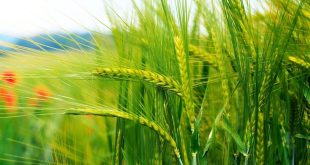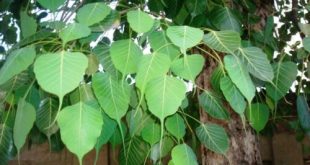How to Take Care Tree Diseases in California? Trees play a vital role in California’s ecosystem, providing oxygen, reducing heat, and enhancing landscapes. However, California’s unique climate—characterized by droughts, intense summer heat, and occasional wet winters—poses significant challenges to tree health. Many trees are at risk of developing diseases that, if left untreated, can cause serious damage or even tree loss.
Understanding how to identify, prevent, and treat these issues is crucial for maintaining healthy trees. This guide will help you recognize, treat, and prevent common tree diseases in California, ensuring your trees stay strong and healthy throughout the year.

1. Identify tree diseases:
Trees are essential to the beauty and health of our landscapes, but they can be vulnerable to various diseases. Identifying these diseases early and taking proper action can help prevent severe damage. Some of the common symptoms are as follows:
Common Symptoms
- Wilting or yellowing leaves
- Unusual spots or growths on bark
- Fungal presence or decaying roots
- Leaf drop outside normal seasonal changes
Common Tree Disease Symptoms and Their Treatments:
Below are some common tree diseases and their treatments:
1. Sudden Oak Death
Symptoms: Caused by the pathogen Phytophthora ramorum, Sudden Oak Death primarily affects oak trees. It leads to the formation of dark, oozing cankers on the trunk, along with leaf wilting and browning.
Treatment: If you suspect Sudden Oak Death, consult a professional arborist immediately. Infected trees should be removed, and nearby trees can be treated with fungicides to prevent further spread.
2. Fire Blight
Symptoms: Fire Blight is a bacterial infection that impacts fruit trees like apples and pears. It gives trees a scorched look, turning leaves, branches, and fruit black.
Treatment: Prune affected branches during the dormant season and dispose of them properly. Applying a copper-based bactericide can help manage the disease. Regular pruning is essential to keeping trees healthy.
3. Anthracnose
Symptoms: This fungal disease affects trees such as sycamore, ash, and maple, leading to leaf blight, twig dieback, and branch cankers.
Treatment: Remove infected branches and dispose of them carefully. Applying fungicides during the dormant season helps stop the disease from spreading. Proper pruning techniques are also effective in disease prevention.
4. Powdery Mildew
Symptoms: This fungal infection causes a white, powdery coating to form on leaves and new shoots. It commonly affects oak, maple, and dogwood trees.
Treatment: Improving air circulation between trees by pruning overcrowded branches can help. Fungicide applications are also effective in controlling the spread of Powdery Mildew. Routine tree care can prevent future outbreaks.
5. Verticillium Wilt
Symptoms: A soil-borne fungal disease, Verticillium Wilt impacts tree species like maple, ash, and elm. It causes leaves to yellow, wilt, and brown, often leading to branch dieback.
Treatment: There is no cure for Verticillium Wilt, so choosing resistant tree species and following proper planting practices is crucial. If a tree becomes infected, removal may be necessary to stop it from spreading to healthy trees.
6. Oak Root Fungus (Armillaria Root Rot)
Symptoms: Wilting leaves, dieback, clusters of mushrooms near the tree base, and white fungal growth beneath the bark. This soil-borne fungus is often worsened by overwatering or poor drainage, leading to long-term root decay.
2. Prune and Remove Infected Areas
Proper pruning can prevent the spread of disease.
- Trim infected branches at least 12–18 inches below the diseased area to remove all affected tissue.
- Disinfect pruning tools between cuts using a one-part bleach to nine-part water solution to avoid spreading pathogens.
- Dispose of all infected plant material properly—never compost diseased branches, as they can reintroduce the infection.
3. Apply the Right Treatment
Different tree diseases require specific treatments. Use the following methods for targeted care:
- Anthracnose: Apply copper-based fungicides in early spring to prevent fungal growth.
- Powdery Mildew: Neem oil or sulfur-based sprays are effective in controlling mildew outbreaks.
- Oak Root Fungus: There is no chemical cure, but improving drainage and reducing excess moisture can slow its progression.
Always follow product instructions carefully, and avoid excessive pesticide use to protect beneficial organisms.
4. Strengthen Tree Health
A healthy tree is more resilient against disease. Strengthen your trees by:
- Watering deeply but not regularly to encourage strong root growth.
- Applying balanced fertilizers during the growing season for essential nutrients.
- Mulching around the base (2–4 inches thick) to retain moisture and regulate soil temperature—be sure to keep mulch away from the trunk to prevent rot.
Early intervention combined with consistent care can often reverse minor infections and prevent further deterioration.
When to Seek Professional Help?
- If a tree shows multiple signs of disease
- When structural integrity is compromised
- When home remedies fail to show improvement
How to Prevent Tree Diseases in the Future?
Preventing disease is always easier than treating it. Here are some proactive measures to keep your trees healthy year-round.
Routine Tree Maintenance
Regular upkeep is the key to early disease detection and prevention.
- Inspect trees seasonally for symptoms of the disease.
- Prune annually to improve airflow and remove weak or damaged branches.
- Clear away fallen leaves and debris, as these can harbor disease-causing organisms.
Plant Disease-Resistant Tree Varieties:
Choosing resilient tree species can help prevent disease issues before they start. Some excellent choices for California’s climate include:
- Valencia Orange (resistant to citrus canker)
- Chinese Pistache (resistant to oak root fungus)
- Coast Redwood (highly adaptable and less disease-prone)
Ensure Proper Planting and Watering Practices:
Root health plays a major role in tree longevity. To prevent root diseases like Oak Root Fungus:
- Plant in well-draining soil to avoid excess moisture retention.
- Monitor watering schedules using moisture meters to prevent overwatering.
- Aerate the soil around tree roots once a year to enhance oxygen flow.
When to Call a Professional Arborist
While DIY tree care is effective for minor issues, severe infections often require expert intervention. Consider hiring an arborist if:
- A tree shows extensive dieback or root rot.
- The disease affects large or mature trees, which may be dangerous to treat yourself.
- Advanced treatments or laboratory testing are needed, such as in the case of Sudden Oak Death.
For the best care, seek a certified arborist through the International Society of Arboriculture (ISA) to receive specialized diagnosis and treatment plans.
FAQs
1. What are the most common tree diseases in California?
Sudden Oak Death, Fire Blight, and Anthracnose are some of the most widespread diseases.
2. How can I prevent tree diseases?
Regular pruning, proper soil management, and adequate watering help prevent most diseases.
3. When should I call a tree care professional?
If your tree shows persistent disease symptoms or structural instability, consult an expert.
4. What eco-friendly methods help treat tree diseases?
Biological control, natural fungicides, and integrated pest management are effective green alternatives.
5. How does climate impact tree health in California?
Drought and extreme temperatures weaken trees, making them more susceptible to disease.
6. Are there legal regulations for tree care in California?
Yes, certain trees are protected, and some areas require permits for removal.
Take Action to Protect Your Trees
By understanding the causes, symptoms, and treatments of tree diseases, Californians can take proactive steps to preserve their trees. Regular maintenance, timely intervention, and responsible planting choices ensure long-term tree health.
Healthy trees offer numerous benefits, from enhancing curb appeal to improving air quality and supporting wildlife. However, neglecting early disease symptoms can lead to costly damage and even tree loss.
By staying proactive—monitoring tree health, applying timely treatments, and practicing good maintenance—you can ensure your trees thrive for years to come. Don’t wait until it’s too late—start implementing these tree care strategies today!



